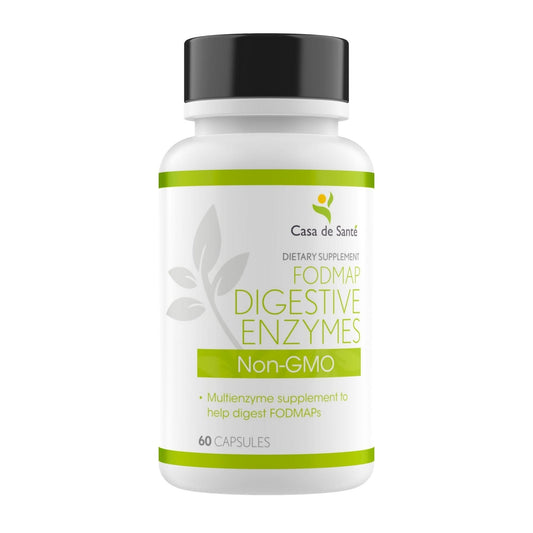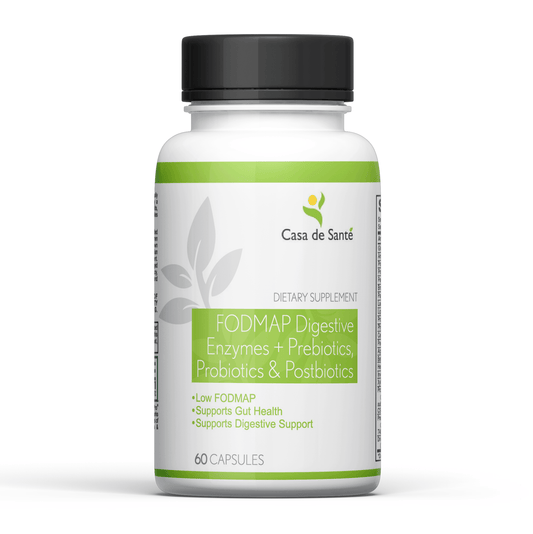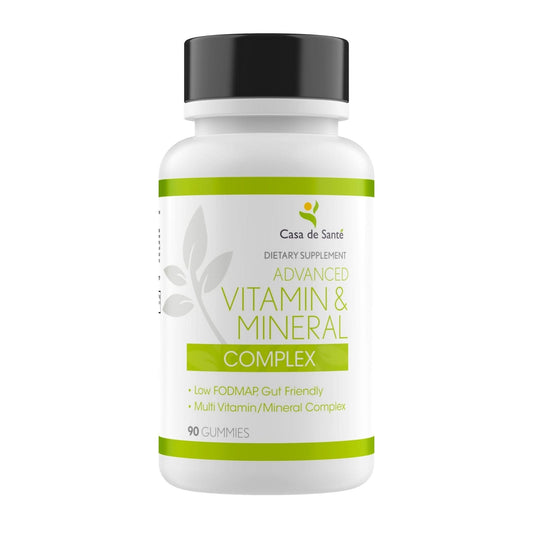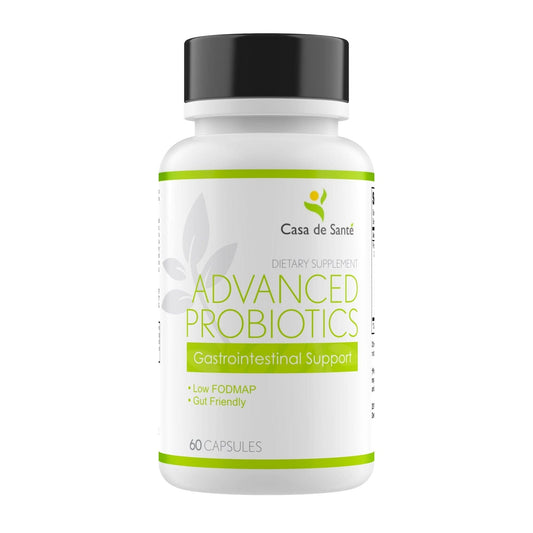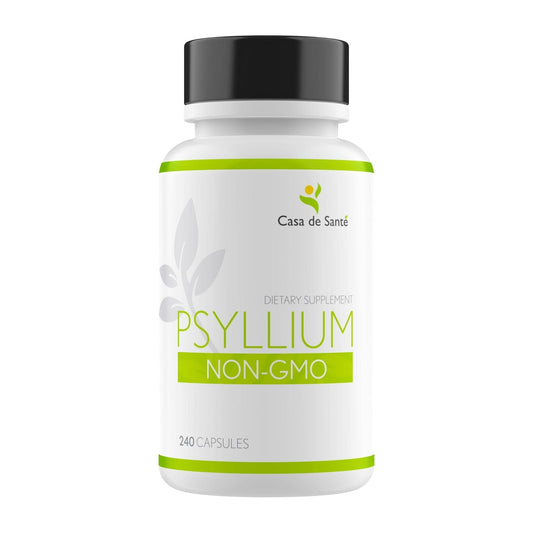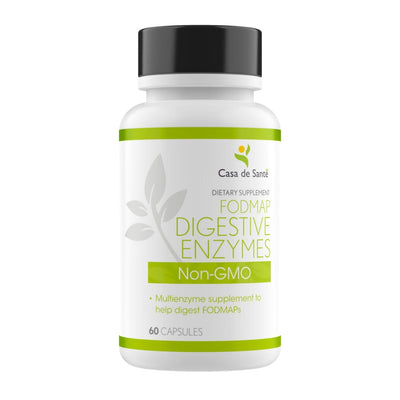Discovering Natural Organic Low FODMAP Relief: A Guide to Fiber-Rich Foods
Understanding Low FODMAP and Its Benefits
What is Low FODMAP?
Low FODMAP is a diet plan designed to help people with digestive issues, particularly those with irritable bowel syndrome (IBS). FODMAP stands for fermentable oligosaccharides, disaccharides, monosaccharides, and polyols—types of carbohydrates that can be hard to digest. When these carbs aren't absorbed well in the small intestine, they can cause symptoms like bloating, gas, and stomach pain. By reducing foods high in FODMAPs, individuals often find relief from these uncomfortable symptoms.
Benefits of a Low FODMAP Diet
Adopting a low FODMAP diet can lead to significant improvements in digestive health. Many people notice a reduction in bloating and discomfort after just a few weeks. This diet can also help manage symptoms of IBS and other gastrointestinal disorders. Moreover, it can lead to a better understanding of how different foods affect your body, allowing for more personalized meal planning.
Common Misconceptions About FODMAP
There are several misconceptions about the low FODMAP diet. One common myth is that it's a long-term solution, but it's actually intended for short-term use to identify food triggers. Another misconception is that all carbs are off-limits, which isn't true. The diet focuses on reducing specific types of carbs, not eliminating them entirely. Finally, some believe this diet is only for those with IBS, while it can actually benefit anyone experiencing digestive discomfort.
Adopting a low FODMAP lifestyle isn't about cutting out all carbs—it's about finding out which ones work best for your body, leading to a happier, healthier gut.
Incorporating Fiber-Rich Foods for Gut Health
Top Fiber-Rich Foods for Low FODMAP Diet
Jumping on a low FODMAP diet doesn't mean you have to miss out on fiber. In fact, there are plenty of fiber-rich foods that fit right in. Here are some top picks:
- Kiwi: Not only is it delicious, but it's also a great source of fiber. Plus, it's low in FODMAPs, making it a perfect snack.
- Carrots: These crunchy veggies are not just for rabbits. They're loaded with fiber and are a fantastic low FODMAP option.
- Oats: A breakfast staple that's both filling and fiber-rich. Just be sure to choose gluten-free oats to stay low FODMAP.
How Fiber Supports Digestive Health
Fiber is like your gut's best friend. It helps keep things moving and can even aid in preventing constipation. When you're on a low FODMAP diet, balancing fiber can be tricky, but it's crucial for maintaining good digestive health. Fiber adds bulk to your stool, which can help in keeping your bowel movements regular.
A fiber-rich diet can be a lifesaver for those struggling with digestive issues. It supports the gut by promoting regularity and can even help in managing symptoms of IBS.
Balancing Fiber Intake with FODMAP Restrictions
Finding the sweet spot between enough fiber and keeping FODMAPs low can be a bit of a balancing act. Here's how you can manage it:
- Start slow: Increase your fiber intake gradually to give your digestive system time to adjust.
- Mix it up: Incorporate a variety of low FODMAP fiber sources to keep your meals interesting and nutritious.
- Stay hydrated: Drinking plenty of water helps fiber do its job better, aiding digestion and preventing discomfort.
Remember, exploring low FODMAP options can open up a world of tasty and gut-friendly foods, making your journey to better digestive health both enjoyable and effective.
Natural Organic Solutions for Digestive Relief
Finding relief from IBS symptoms can be a real game-changer. Herbal remedies have been used for ages, and some folks swear by them. Peppermint oil, for instance, can help ease those pesky abdominal cramps. Chamomile tea is another favorite, known for its calming effects on the gut. Ginger, in its many forms, is often praised for reducing nausea and soothing the stomach.
Probiotics and Prebiotics
Probiotics are the good guys in the gut world. They help maintain a healthy balance of bacteria, which is crucial for digestion. Yogurt with live cultures, kefir, and certain fermented foods are great sources. Prebiotics, on the other hand, feed these beneficial bacteria. Foods like bananas, oats, and asparagus are rich in prebiotics. Together, they make a powerful team for digestive health.
The Role of Fermented Foods
Fermented foods are like nature's little helpers. They're packed with probiotics, which can improve gut health. Think sauerkraut, kimchi, and miso. These foods not only add a punch of flavor to meals but also support digestion and nutrient absorption. Including them in your diet might just be the key to a happier gut.
A happy gut often leads to a happier you. When your digestive system is in check, it can positively impact your overall well-being. It's amazing how small changes, like adding fermented foods or a probiotic yogurt, can make a big difference.
Creating a Balanced Low FODMAP Meal Plan
Essential Components of a Low FODMAP Meal
Crafting a balanced low FODMAP meal plan isn't just about avoiding certain foods. It's about ensuring you get all the nutrients you need while sticking to your dietary restrictions. Protein, healthy fats, and low FODMAP carbohydrates are your best friends here. Think of lean meats like chicken and fish, eggs, and firm tofu for protein. Pair these with healthy fats such as olive oil or avocado. Add some low FODMAP veggies like spinach, carrots, and bell peppers to round out your meals.
Tips for Meal Planning
Getting started with meal planning can feel like a chore, but once you get the hang of it, it can make your life so much easier. Here are some tips:
- Plan Ahead: Set aside time each week to plan your meals. This helps you avoid last-minute decisions that might not fit your diet.
- Batch Cooking: Prepare larger portions of your meals and store them for later. This is a lifesaver on busy days.
- Keep it Simple: Don't overcomplicate things. Simple meals with a few ingredients can be just as satisfying.
Sample Low FODMAP Recipes
To get you started, try these simple recipes:
- Grilled Chicken and Quinoa Salad: Grill some chicken breasts and toss them with cooked quinoa, spinach, and a squeeze of lemon.
- Stir-Fried Tofu and Veggies: Use firm tofu, broccoli, and carrots, stir-fried in a bit of sesame oil.
- Baked Salmon with Herbs: Season salmon with salt, pepper, and dill, and bake until flaky. Serve with a side of steamed green beans.
Balancing your meals while keeping them low FODMAP doesn't have to be a struggle. With a bit of planning and creativity, you can enjoy delicious meals that support your digestive health.
For more resources and support on FODMAP diets and meal planning, check out our community and blog sections.
Exploring Low FODMAP Snacks and Beverages
Healthy Snack Options
Finding snacks that fit a low FODMAP diet doesn't have to be a challenge. Here's a list of some tasty and safe options:
- Rice Cakes: These are great because they are light and versatile. You can top them with a bit of peanut butter or a slice of cheese for extra flavor.
- Popcorn: A natural whole grain that's not only low in FODMAPs but also a good source of fiber. Just go easy on the butter!
- Hard-boiled eggs: Simple, nutritious, and filling. Perfect for on-the-go snacking.
Low FODMAP Beverages
When it comes to drinks, you have more choices than you might think:
- Herbal Teas: Peppermint or ginger tea can be soothing and are generally low in FODMAPs.
- Lactose-free milk: A good option for those who miss dairy but need to avoid lactose.
- Sparkling Water: Add a slice of lemon or lime for some zest without the FODMAPs.
Avoiding Hidden FODMAPs in Snacks
Navigating the snack aisle can be tricky. Here are some tips:
- Read labels carefully: Ingredients like garlic and onion can sneak into snacks.
- Stick to whole foods: The fewer ingredients, the better.
- Beware of "sugar-free" products: Many contain sugar alcohols that are high in FODMAPs.
It's surprising how many delicious options are available for those on a low FODMAP diet. With a bit of creativity, you can enjoy a variety of snacks and drinks without worry.
For those looking to explore a variety of low FODMAP and keto-friendly snack foods, Amazon offers a wide range of products that cater to specific dietary needs, including bakery supplies, breakfast items, and more.
The Importance of Reading Labels for FODMAP Content
Understanding Food Labels
When you're on a low FODMAP diet, reading food labels becomes super important. Understanding what's in your food can make or break your meal plan. It's not just about avoiding high FODMAP ingredients but also knowing what safe alternatives are. Labels can be tricky, with scientific names and hidden ingredients. Knowing your way around them helps you stay on track and avoid discomfort.
Identifying High FODMAP Ingredients
Many common foods have ingredients that are high in FODMAPs. Here’s a quick list of what to watch for:
- High-fructose corn syrup
- Lactose in dairy products
- Certain sweeteners like sorbitol or mannitol
These ingredients might be sneaky, showing up in unexpected places. Always double-check, especially with processed foods.
Tips for Shopping Low FODMAP
Shopping for low FODMAP foods doesn't have to be stressful. Here are some tips to make it easier:
- Plan ahead: Make a list of safe foods and stick to it.
- Use apps or guides: There are resources available that list low FODMAP products.
- Go for whole foods: Fresh fruits, veggies, and meats are usually safe bets.
Taking the time to read labels and understand what's in your food can greatly improve your digestive health. Being informed empowers you to make better choices and enjoy your meals without worry. For more insights on how to manage a low FODMAP lifestyle, check out our digestive health resources.
Lifestyle Changes to Enhance Digestive Health
Stress Management Techniques
Stress can really mess with your gut. When you're stressed, your body releases hormones that can throw off your digestive system. Finding ways to manage stress is crucial for keeping your gut happy. Here are a few techniques:
- Meditation: Spend a few minutes each day focusing on your breath. It can calm your mind and improve digestion.
- Yoga: This combines physical movement with deep breathing, which can reduce stress and aid digestion.
- Deep Breathing Exercises: Simple breathing exercises can help lower stress levels quickly.
Exercise and Gut Health
Regular exercise is not just good for your heart and muscles; it also benefits your gut. Getting moving can help food move through your digestive system more efficiently, reducing bloating and constipation. Here are some activities to consider:
- Walking: A simple walk after meals can aid digestion.
- Cycling: This low-impact exercise is great for your gut and overall health.
- Swimming: It’s gentle on the body and can help keep your digestive system in check.
Mindful Eating Practices
Eating isn't just about what you eat, but how you eat. Mindful eating can improve digestion by making you more aware of your body's hunger and fullness cues. Here’s how to practice it:
- Chew Thoroughly: Take your time to chew food well, which aids in better digestion.
- Eat Slowly: Slow down and enjoy your meals to prevent overeating and indigestion.
- Listen to Your Body: Pay attention to your body's signals to know when you're hungry or full.
Making small lifestyle changes can have a big impact on your digestive health. By managing stress, staying active, and eating mindfully, you can support your gut and overall well-being.
Making small changes in your daily routine can greatly improve your digestive health. Start by eating more fiber-rich foods, staying hydrated, and being active. These simple steps can help your gut feel better and work more efficiently. For more tips and resources, visit our website and discover how you can enhance your digestive wellness today!



